Archivo de noticias y eventos
201 - 250 de un total de 2404
También puede acceder a la lista de noticias publicadas en los medios relacionadas con el Instituto de Astrofísica de Andalucía - CSIC.
Pages
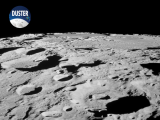
|
15/01/2024
Proyecto DUSTER: un estudio del polvo lunar en preparación de futuras misiones de exploración Mientras las agencias espaciales se preparan para regresar a la Luna, equipos científicos e ingenieros se enfrentan al desafío de mitigar un importante riesgo ambiental: el polvo El Instituto de Astrofísica de Andalucía (IAA-CSIC) participa en el proyecto DUSTER, que estudiará las partículas de polvo cargadas, que suponen un grave riesgo para la salud de los exploradores humanos y para los instrumentos espaciales |
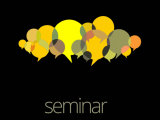
|
19/03/2024 - 16:30
Recent Progress in Understanding Solar Flare Magnetism using Data-Driven Simulations and Statistical Analysis of Vector Magnetic Fields Continuous vector magnetic-field measurements by the Helioseismic and Magnetic Imager (HMI) onboard the Solar Dynamics Observatory (SDO) allowed us to run data-driven simulations of solar eruptions and perform statistical studies of magnetic-fields for many flares. In this talk I will review new aspects of flare magnetism discovered using SDO data, including progress in data-driven simulations and statistical studies of magnetic-reconnection... Dr. María Kazachenko |

|
07/05/2024 - 12:30
Journey into the Galactic Heart: Illuminating the Enigma of the Nuclear Star Cluster and the Nuclear Stellar Disc. The innermost regions of most galaxies are characterised by the presence of extremely dense nuclear star clusters, which sometimes appear together with larger stellar structures known as nuclear stellar discs. Understanding the relation between nuclear star clusters and nuclear stellar discs is challenging due to the large distance towards other galaxies which limits their analysis to integrated light. In this context, the Milky Way’s centre,... Francisco Nogueras Lara |

|
08/02/2024 - 12:30
The Transient High-Energy Sky and Early Universe Surveyor (THESEUS) The Transient HIgh-Energy Sky and Early Universe Surveyor (THESEUS) is a mission concept developed by a large European collaboration under study by ESA since 2018 and currently one of the three candidate M7 mission for a launch in mid '30s. THESEUS aims at fully exploiting Gamma-Ray Bursts for investigating the early Universe and as key phenomena for multi-messenger astrophysics. By providing an unprecedented combination of X-/gamma-ray... Dr. Lorenzo Amati |
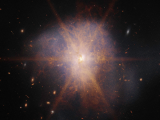
|
08/01/2024
Galaxias cazadas en pleno ‘rejuvenecimiento’ químico Un equipo del IAA-CSIC lidera un pionero estudio que desvela el papel crucial de las fusiones galácticas en la evolución química de las Galaxias Infrarrojas Ultraluminosas. |
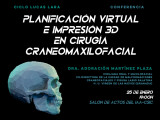
|
25/01/2024 - 19:00
Planificación virtual e impresión 3D en cirugía Craneomaxilofacial Cada año en todo el mundo muchos pacientes requieren reconstrucción quirúrgica de deformidades craneales y faciales adquiridas y congénitas. La reconstrucción de estos defectos son siempre un desafío para el cirujano debido a una anatomía compleja donde asientan funciones vitales, así como la apariencia facial. La cirugía craneomaxilofacial, en la última década, ha experimentado un profundo cambio conceptual en la planificación y en la mesa de... Adoración Martínez Plaza |
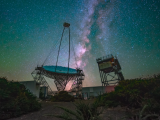
|
26/12/2023
Detectado el AGN más distante observado hasta la fecha en muy altas energías La detección ha sido realizada por el LST-1, primer telescopio LST del Observatorio CTAO. El Instituto de Astrofísica de Andalucía (IAA-CSIC) participa en las observaciones y análisis de los datos. |

|
18/01/2024 - 12:30
A Year Beyond the Horizon: Advancing Our Understanding of M87* with New EHT Observations. In this presentation, we introduce the first follow-up Event Horizon Telescope (EHT) observations of M87*, taken a year after the epoch-making first image. The enhanced imaging, facilitated by additional antennas, increased data rates, and new imaging techniques, not only provides greater detail but also enables us to study the dynamics of the black hole within a year. Due to the embargo, specific results are not included in this abstract, but... IAA-CSIC EHT group |

|
03/10/2024 - 12:30
SO Colloquium: The next generation of milliarcsecond surveys with SKA-VLBI Very Long Baseline Interferometry (VLBI), using both SKA-Low and SKA-Mid, is poised to deliver groundbreaking observations with milliarcsecond resolution, surpassing the capabilities of the standard SKA array. VLBI in conjunction with the SKA holds the promise of unlocking profound insights across various astrophysical topics and science working groups. VLBI with the SKA stands to revolutionise our understanding of galaxy evolution and the... Dr. Jack Radcliffe |

|
15/04/2024 - 12:30
Astronomy with Neutrino Telescopes In recent decades, high-energy neutrinos of astrophysical origin have become integral members of the multi-messenger astronomy community. Neutrino telescopes have a very particular way to observe the sky, with characteristics different from any other telescope. They are capable of continuously observing the entire sky simultaneously, yet they also necessitate the accumulation of a significant amount of statistical data. IceCube reported the... Agustín Sánchez Losa |
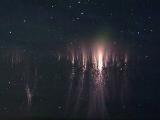
|
12/12/2023
Revelan el origen de los fantasmas, un tipo de eventos luminosos transitorios que se producen en la atmósfera Los fantasmas (o GHOSTs) forman parte de una familia de eventos que, aunque se relacionan con los rayos de tormenta, se producen en la mesosfera, decenas de kilómetros sobre las nubes. El Instituto de Astrofísica de Andalucía (IAA-CSIC) encabeza el primer estudio espectroscópico de estos infrecuentes y breves fenómenos, que los asocia con compuestos inesperados, como hierro y níquel |
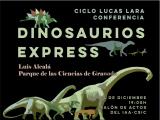
|
14/12/2023 - 19:00
Dinosaurios express ¡Todo el mundo sabe qué es un dinosaurio! ¿Seguro…? Bastantes animales son llamados dinosaurios sin serlo, mientras que hay dinosaurios que difícilmente se identificarían como tales Luis Alcalá |
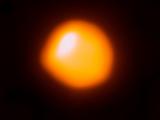
|
05/12/2023
La noche del 11 al 12 de diciembre la estrella Betelgeuse desaparecerá… por unos segundos En torno a las 2:15 de la madrugada del 12 de diciembre, el asteroide Leona pasará por delante de la estrella supergigante roja Betelgeuse, un evento muy poco habitual que podrá observarse a simple vista. El Instituto de Astrofísica de Andalucía (IAA-CSIC) ha organizado una campaña de observación del fenómeno, que permitirá estudiar tanto el asteroide como la atmósfera de la estrella |
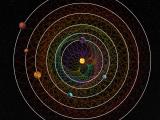
|
29/11/2023
Una danza cósmica revela un sistema de seis planetas El Instituto de Astrofísica de Andalucía (IAA-CSIC) participa en el descubrimiento de un sistema séxtuple con órbitas sincronizadas, cuya configuración demuestra que permanece inalterado desde su formación hace más de mil millones de años. El resultado ha sido posible gracias a una colaboración internacional con datos de los satélites CHEOPS (ESA) Y TESS (NASA), así como del instrumento CARMENES del Observatorio de Calar Alto |

|
23/11/2023
El IAA-CSIC se prepara para una investigación climática pionera desde el espacio La misión CAIRT, en cuyo diseño científico ha participado el Instituto de Astrofísica de Andalucía (IAA-CSIC), se halla entre las dos propuestas seleccionadas por la Agencia Espacial Europea (ESA) para pasar a la Fase A del programa Earth Explorer 11. CAIRT tiene como objetivo estudiar cómo reacciona la atmósfera terrestre al cambio climático |

|
30/11/2023 - 19:30
Jugando con la luz Experimentos con luz, de la mano de Miguel Cabrerizo. Miguel Cabrerizo |
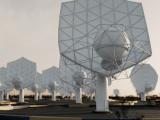
|
21/11/2023
El IAA-CSIC aborda el desafío computacional del Observatorio SKA para estudiar el nacimiento de las primeras estrellas Junto con otros dos centros del CSIC, ha aportado su experiencia en big data para afrontar uno de los restos del futuro observatorio, que investigará la fase del Universo en la que se formaron las estrellas. El Observatorio del SKA, la mayor infraestructura científica proyectada hasta la fecha, constituye un esfuerzo internacional para construir los radiotelescopios más potentes del mundo |

|
29/02/2024 - 12:30
SO Colloquium: Eyes on the Invisible: Charting New Horizons with the Event Horizon Telescope The Event Horizon Telescope (EHT) collaboration has captured the first-ever image of a black hole's event horizon in the galaxy M87, and more recently, in the supermassive black hole at the center of our Milky Way, SgrA*. These images, consistent with Kerr black holes as described by General Relativity, provide the strongest evidence to date for the existence of supermassive black holes in galaxy nuclei. Notably, the first polarization images of... Dr. Avery Broderick |

|
13/11/2023
Granada acoge una reunión internacional para abordar el problema de la contaminación lumínica enmarcada en la presidencia española de la UE El Instituto de Astrofísica de Andalucía (IAA-CSIC), a través de su Oficina de Calidad del Cielo, organiza este encuentro en colaboración con la Red Española de Contaminación Lumínica. La cita reunirá en Granada a más de cincuenta expertos en contaminación lumínica de diferentes países europeos |

|
08/11/2023
Los campos magnéticos del agujero negro en M87, al descubierto con una nueva luz La colaboración del Event Horizon Telescope (EHT) ha publicado nuevos resultados que describen por primera vez cómo la luz procedente del borde del agujero negro supermasivo M87* gira en espiral al escapar de la intensa gravedad del agujero negro |
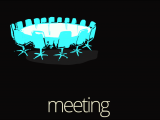
|
14/11/2023 - 15/11/2023
https://www.iaa.csic.es/noticias/meeting-light-pollution-challenges-and-response… Granada |

|
20/10/2023
Congreso para promover sinergias entre los grandes observatorios astronómicos españoles Primera reunión de los grandes observatorios astronómicos en territorio español. |

|
11/01/2024 - 12:30
MOSAIC: the high multiplex and multi-IFU spectrograph for the ELT MOSAIC is the planned multi-object spectrograph for the 39m Extremely Large Telescope (ELT). Conceived as a multi-purpose instrument, it offers both high multiplex and multi-IFU capabilities at a range of intermediate to high spectral resolving powers in the visible and the near-infrared. In this talk I will showcase the key science cases that drive the top-level requirements and the adopted instrument architecture. With a planned first light in... Dr Ruben Sanchez-Janssen |
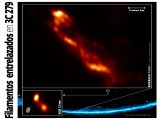
|
26/10/2023
Observaciones con interferometría espacial revelan filamentos helicoidales en el interior del chorro lanzado por un agujero negro supermasivo El Instituto de Astrofísica de Andalucía (IAA-CSIC) encabeza la observación con mayor resolución y sensibilidad del chorro de material que emerge del núcleo de la galaxia 3C 279 a casi la velocidad de la luz |
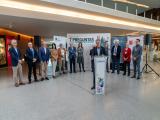
|
23/10/2023
Granada acoge el encuentro anual de los centros de excelencia científica de la Alianza SOMMa Granada acoge el encuentro anual de los centros de excelencia científica de la Alianza SOMMa |

|
24/10/2023 - 25/10/2023
https://www.iaa.csic.es/meetings/andes-technical-meeting Granada |
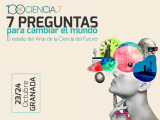
|
23/10/2023 - 24/10/2023
https://www.granadacongresos.com/100xciencia7 Granada |
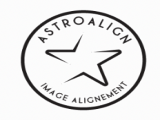
|
14/10/2023 - 14/10/2023
https://indico.iaa.csic.es/event/8/ On line |
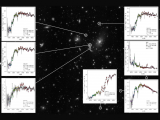
|
18/10/2023
J-PAS: comienza el mayor cartografiado del cosmos Observará cientos de millones de galaxias desde el Observatorio Astrofísico de Javalambre con el objetivo de comprender la expansión acelerada del Universo |

|
25/01/2024 - 12:30
Stellar population studies in the J-PAS survey The Javalambre Physics of the Accelerating Universe Astrophysical Survey (J-PAS) is a large scale multi-filter survey that has started to observe 8500 deg² of the northern sky with 54 narrow-band filters in the optical range (3500-9600Å). In our Galaxy Evolution group at IAA-CSIC, we aimed at developing and testing methodologies in order to perform stellar populations studies using this kind of data. More precisely, I will introduce our SED-... Dr. Luis Alberto Díaz García |

|
19/12/2023 - 12:30
Fundamental Physics From Ground-Based Gamma-Rays Observations Crucial topics in fundamental physics, such as the existence of new particles, or violations of the Lorentz Invariance arising at the Planck scale, can be effectively tackled in the cosmic environment, by means of ground-based observations in the VHE gamma-ray band. This includes both Particle showers detectors, such as LHAASO and Imaging Atmospheric Cherenkov Telescopes, such as MAGIC, H.E.S.S., or the forthcoming CTA and ASTRI Mini-Array. I... Dr. Giacomo Bonnoli |
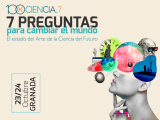
|
16/10/2023
¡100xCiencia.7 ya está aquí! El Parque de las Ciencias de Granada acogerá el 23 y 24 de octubre la séptima edición de 100xCiencia, el encuentro anual de la alianza SOMMa que reunirá a la comunidad científica de los Centros de Excelencia Severo Ochoa y Unidades de Excelencia María de Maeztu. 100xCiencia.7 está coorganizado por SOMMa junto a los anfitriones de este año: el Instituto de Astrofísica de Andalucía (IAA-CSIC) y el Instituto de... |
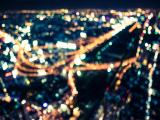
|
02/11/2023
Meeting on Light Pollution: Challenges and Responses for Monitoring it Light pollution has a direct impact on the environment, on astronomical observations and on the starry sky as a heritage resource of humanity. Excessive light confuses the biological clocks of humans, animals and plants with its spectral composition similar to daylight. As a result, it makes it difficult to distinguish between day and night and between the seasons to which living organisms are physiologically attuned. Light pollution is... |

|
02/10/2023 - 02/10/2023
https://indico.iaa.csic.es/event/7/ Granada |

|
16/01/2024 - 12:30
UGR bureocrazy for dummies: PhDs fight back Every year we all wonder about the UGR bureaucracy: did we miss something? how could we have known in advance? Let's face it, it's a mess. To try to help us all, especially those who are just starting, I would like to invite everyone interested to a seminar dedicated to understanding what the PhDs have to go through every year (paperwork related), where to find the proper information, who to contact in case of doubt and how to go through the PhD... Teresa Toscano |
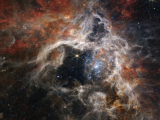
|
27/11/2023 - 01/12/2023
https://www.granadacongresos.com/starform2023 Granada |

|
16/11/2023 - 17/11/2023
https://indico.iaa.csic.es/event/4/ Granada |
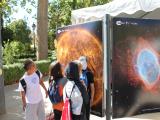
|
28/09/2023
Vuelve la La Noche Europea de l@s Investigador@s La Noche Europea de los Investigadores vuelve a su cita anual con la sociedad granadina. Más de 440 investigadores e investigadoras participarán en este acto de divulgación científica especialmente relevante que, además de en Granada, se celebra en más de 400 ciudades europeas. |
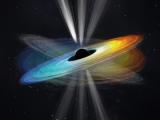
|
27/09/2023
Dos décadas de observación de la galaxia M87 muestran un chorro oscilante conectado a un agujero negro giratorio El Instituto de Astrofísica de Andalucía (IAA-CSIC) participa en el seguimiento, durante veintitrés años, del agujero negro supermasivo central de la galaxia M87, el primero del que se obtuvo una imagen. El estudio revela que el chorro que emerge del centro oscila, lo que aporta a su vez la primera evidencia de rotación de un agujero negro supermasivo |

|
31/10/2023 - 12:30
Outflows from low to high luminous AGNs Outflows are believed to play a major role in the evolution of galaxies and are said to be ubiquitous within the active galactic nuclei (AGN) population. However, we still lack a comprehensive view of their properties and impact in their host galaxies and the surrounding medium. If we focus on the low luminosity part of the AGN family, in particular in low ionisation nuclear emission-line regions (LINERs), the impact of outflows is still largely... Laura Hermosa Muñoz |

|
03/10/2023 - 12:30
Young massive clusters in the Gaia era After the detection of gravitational waves and the realisation of the wide diversity among core-collapse supernova explosions, Interest in massive stars has been rekindled. Young open clusters are our natural laboratories to explore the lives and deaths of massive stars, and most of our current understanding comes from their study. Until recently, we have been strongly limited by practical difficulties and small number statistics. Most open... Dr. Ignacio Negueruela |
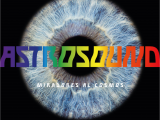
|
15/09/2023
ASTROSOUND II: Miradores al Cosmos El Instituto de Astrofísica de Andalucía (IAA-CSIC), en colaboración con el Festival Granada Sound y el Ayuntamiento de Granada, recibirá a los “granasounders” con una gran exposición digital en una pantalla LED gigante junto a las casetas de acreditaciones del festival, que este año estarán situadas en la Fuente de las Granadas. |

|
26/09/2023 - 12:30
Coloquio SO: Extracting stellar populations and (mainly) emission line information out of S-PLUS photometry We present tests of a new method to simultaneously estimate stellar population and emission line (EL) properties of galaxies out of S-PLUS photometry. The technique uses the AlStar code, updated with an empirical prior which greatly improves its ability to estimate ELs using only the survey's 12 bands. The tests compare the output of (noise-perturbed) synthetic photometry of SDSS galaxies to properties derived from previous (STARLIGHT-based)... Dr. Roberto Cid Fernandes |

|
30/11/2023 - 12:30
SO Colloquium: Studying star-formation in 'collisional' galaxies with MUSE Galaxies in pre- and post-collisional stages are an excellent laboratory to study the evolution of galaxies, particularly the triggering and suppression of star formation on galactic scales before and after such interactions. In order to analyze the star formation triggered in these systems, we started a series of studies on 'collisional' galaxies with available integral field spectroscopy (IFS) observations. We use Very Large Telescope (VLT)... Dr. Victor Mauricio A. Gómez González |

|
21/09/2023 - 12:30
SO Colloquium: Testing black hole structure with very-long-baseline interferometry Black holes hold a tremendous discovery potential, and experiments such as the Event Horizon Telescope and its next generation upgrade could provide important cues about their structure. New physics beyond general relativity can modify the structure of black holes and leave imprints on image features, for instance changing the separation between photon rings or generating additional sets of photon rings. Both cases motivate the study of the... Dr. Raul Carballo |
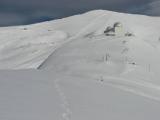
|
11/09/2023
La UGR y el IAA-CSIC unen fuerzas para colaborar en la investigación climática y ecológica en la alta montaña de Sierra Nevada La Universidad de Granada y el Consejo Superior de Investigaciones Científicas (CSIC), a través del Instituto de Astrofísica de Andalucía (IAA-CSIC), han formalizado un convenio con el objetivo de fortalecer la cooperación en el ámbito de la investigación climática y ecológica en Sierra Nevada |
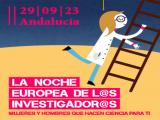
|
29/09/2023
La Noche de l@s Investigador@s 2023 La Noche Europea de l@s Investigador@s se celebra este año el 29 de septiembre en las ocho capitales andaluzas y nosotros te invitamos a Granada a celebrar con nosotr@s en el Stand del IAA-CSIC en el Paseo del Salón. |

|
14/09/2023 - 12:30
X-ray emission from Symbiotic Stars: a stellar window to the Astrophysics of AGN Symbiotic stars (SySts) are binary systems in which a white dwarf (WD) accretes material from a red giant star. X-ray studies of SySts reveal an apparent variety of processes which would suggest different origins. In this talk I will briefly review our current knowledge of the X-ray properties of SySts (their classification and physical parameters), in particular I will describe the iconic systems R Aqr and CH Cyg. Finally I will present our... Dr. Jesús Toalá |

|
09/10/2023 - 12:30
SO Colloquium: The demographics of small exoplanets The diversity of the exoplanet population is beyond our imagination. The more than 5000 known exoplanets vastly differ in mass, size, orbital period, dynamics, and host type. Demographic studies, however, aim to find patterns in the population that inform us about their origin, composition, and evolution. Among these features, perhaps the most surprising is the abundance of planets with no analog in the solar system, also known as sub-Neptunes.... Dr. Rafael Luque |

|
16/11/2023 - 12:30
SO Colloquium: The evolution of the accretion process: investigating the protostellar phase to constraints planet formation The accretion process is responsible for the mass building during the star formation phase, but our knowledge of this phenomenon is still not totally understood. On one side, the magnetospheric accretion scenario describes the accretion on pre-main sequence (Class II/III) low-mass stars. However, most of the material is supposed to be accreted during the earliest stages, i.e. the protostellar phase (Class 0/I), when the forming star and its disk... Dr. Fiorellino, Eleonora |